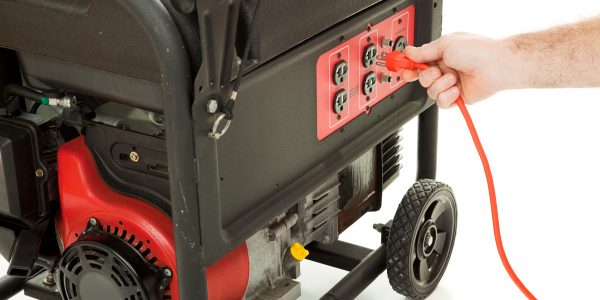While generators are extremely powerful and helpful, it is of the utmost importance that you follow these portable generator safety tips. In addition, always read the owner’s manual and instructions for your portable generator, which also provide safety tips.
Portable Generator Safety Tips
Carbon Monoxide and Ventilation
- Portable generator exhaust contains carbon monoxide, a deadly poisonous gas you cannot see or smell. Never run a generator indoors or in partly enclosed areas such as garages. Only use a portable generator outdoors, away from windows, doors, vents and crawl spaces. Using a fan or opening doors and windows will not provide sufficient ventilation.
- Install battery-operated carbon monoxide alarms indoors according to the manufacturer’s instructions.
Preventing Burns
- Gasoline is extremely flammable and explosive. Do not overfill the fuel tank. If the fuel tank is overfilled, fuel can overflow onto a hot engine and cause a fire or explosion.
- Never add fuel while the unit is running or hot. Allow the generator and the engine to cool before adding fuel. Never store a generator with fuel in the tank where gasoline vapors might reach an open flame, spark or pilot light.
- Do not smoke near fuel or a generator.
- Many generator parts are hot enough to burn you during operation and while the generator is cooling after turning off. Avoid coming into contact with a hot generator.
Electrical Shock Hazards
- Connecting a portable electric generator directly to your household wiring can be deadly to you and others. A generator that is directly connected to your home’s wiring can back-feed onto the power lines connected to your home and injure neighbors or utility workers. Do not connect your generator directly into a regular household outlet. Overloading your generator can seriously damage valuable appliances and electronics. Do not overload the generator.
- Do not operate the generator in wet conditions such as rain or snow.
Operation
- Keep children away from portable generators at all times.
- Allow at least five feet of clearance on all sides of the generator when it is operating.
- Operate the generator only on level surfaces where it will not be exposed to excessive moisture, dirt, dust or corrosive vapors.
- Always disconnect the spark plug wire and place the wire where it cannot contact the spark plug to prevent accidental starting when setting up, transporting, adjusting or making repairs to the generator.




